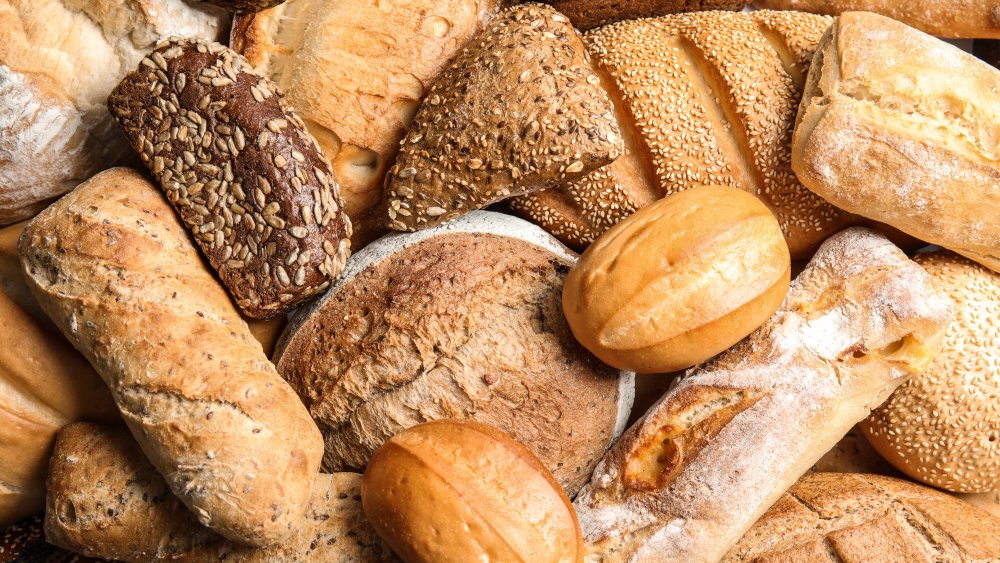Whole Grain Vs Whole Wheat: Which One Is Better For You?
If you've taken even the first baby steps towards a healthier diet, you've probably already learned that the word 'white' is usually not synonymous with good nutrition, unless it's referring to cauliflower. But even when going 'brown,' is there a difference between whole grains and whole wheat? How do you decide which one is better?
Whether we're talking about whole wheat or whole grains, the keyword to keep in mind is 'whole.' That means that all three parts of the kernel are present — the bran, germ, and endosperm (via Healthline). The bran and germ are where most of a grain's nutritional value are found. They are rich sources of fiber, antioxidants, B-vitamins, healthy fats, essential minerals like iron, and phytochemicals. This is in contrast to refined flour, which has had the nutritious bran and germ stripped away, leaving only the endosperm, which is mostly starch.
The term 'whole wheat' refers only to wheat kernels, while 'whole grain' may refer to any number or combination of other grains, like rye, teff, millet, corn or amaranth. In either case, all three parts of the grains must be used for the product to be called 'whole.' So, whole wheat is a whole grain, but not all whole grains are wheat.
Read product labels to check for whole grains
Since any whole grain will contain all three parts of the kernel, experts agree that all provide excellent nutritional value. There is no wrong choice if the grain is whole.
Many studies have documented the health benefits of consuming whole grains, including a reduced risk of heart disease, type-2 diabetes, obesity, and several forms of cancer (via PMC). The fiber found in whole grains also helps push waste through our digestive tracts, preventing constipation, and helps reduce cholesterol levels (via MDLinx).
Unfortunately, labels promoting whole grain goodness can be confusing. Only 51 percent of a product has to actually be whole grain for it to be labeled 'whole grain.' Also, products which say 'made with whole grains,' 'wheat bread,' 'multigrain,' or 'enriched wheat' give very little indication of how much whole grain they actually contain.
Because of that, Amy Gorin, MS, a registered dietitian nutritionist in New Jersey, suggests (via Healthline), "When you're buying a whole grain product, such as bread or crackers, look for the first ingredient to be a whole grain ingredient such as whole grain flour or whole wheat flour. Many whole grain products are made with whole grains but don't contain them as a primary ingredient."


